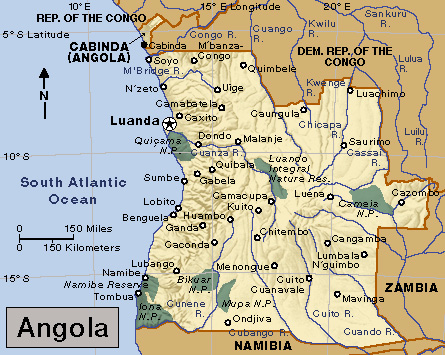Cabinda, << kuh BEEN duh >>, is a district of Angola and a major oil-producing area. It is separated from the rest of Angola by the western end of the Democratic Republic of the Congo and the Congo River. Cabinda covers 2,810 square miles (7,270 square kilometers) and has a population of about 688,000. Its capital and largest city, also called Cabinda, is an important seaport. Cabinda produces most of Angola’s chief export, oil. Cabinda also produces coffee, palm oil, timber, and various minerals.

Black Africans inhabited the Cabinda area more than 2,000 years ago. During the 1500’s, Portuguese settlers claimed possession of Cabinda and other parts of Angola. In the 1960’s, the discovery of oil off Cabinda’s coast and on the mainland gave the area new economic importance. Angola—including Cabinda—was controlled by Portugal until 1975, when it gained independence. Members of a nationalist movement in Cabinda tried to gain independence from Angola. Angolan forces defeated most of these rebels. In August 2006, the Angolan government signed a peace deal with the rebels, ending most of the fighting.
See also Angola.
